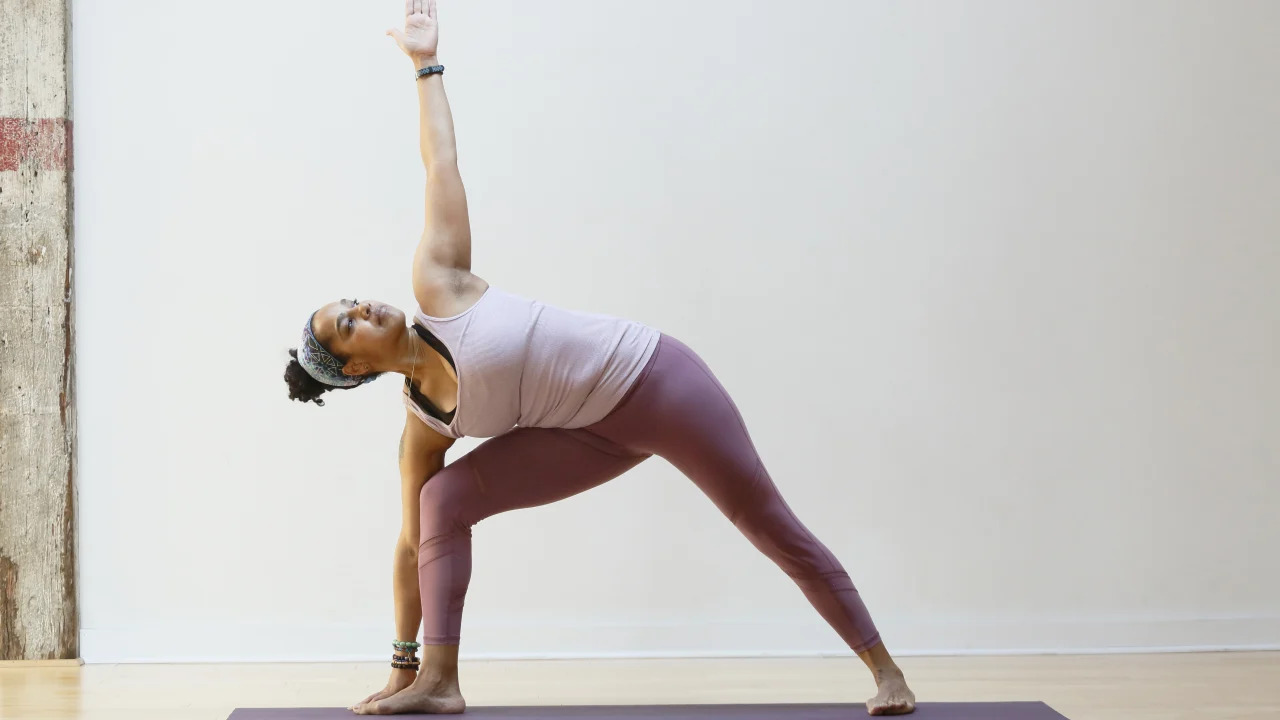Techniques and Poses to Practice

Yoga offers a holistic approach to health, connecting the mind, body, and spirit through movement, breath, and mindfulness. A growing area of interest within the yoga community is the integration of pelvic floor exercises into regular practice. The pelvic floor, a group of muscles that support the bladder, bowel, and uterus, plays a crucial role in overall health. However, these muscles are often overlooked in traditional yoga classes. By consciously integrating pelvic floor exercises, yoga practitioners can enhance core stability, improve bladder and bowel control, and support reproductive health.
In this guide, we'll explore how you can incorporate pelvic floor exercises into your yoga practice to improve pelvic health, reduce discomfort, and enhance overall well-being.
Understanding the Pelvic Floor
The pelvic floor is a set of muscles and tissues that form a hammock-like structure at the base of the pelvis. It plays a key role in stabilizing the spine, supporting pelvic organs, controlling urinary and bowel function, and contributing to sexual health. The muscles of the pelvic floor are responsible for contraction and relaxation, and they work in coordination with the deep core muscles.
When these muscles become weak, tight, or imbalanced, it can lead to a variety of health issues such as incontinence, pelvic pain, or sexual dysfunction. Strengthening and relaxing the pelvic floor through specific exercises can help prevent and alleviate these issues, while also supporting a more mindful yoga practice.
The Role of Yoga in Pelvic Floor Health
Yoga encourages mindfulness, body awareness, and breath control, which are all essential for pelvic floor health. Many yoga poses naturally engage the pelvic floor muscles, but the key is learning to isolate and actively engage these muscles during your practice. By incorporating pelvic floor exercises into yoga, you can strengthen the pelvic muscles, increase flexibility, and improve the overall function of the pelvic region.
Tips for Integrating Pelvic Floor Exercises into Your Yoga Practice
Incorporate Pelvic Floor Awareness
Start by cultivating awareness of your pelvic floor. In many yoga poses, you may naturally engage these muscles, but it’s important to focus on them intentionally. Begin by sitting comfortably in a cross-legged position or lying on your back. Close your eyes, place your hands on your lower abdomen, and gently breathe in and out. With each exhale, imagine gently lifting your pelvic floor muscles, as if you are stopping the flow of urine or holding back gas. This is the basic engagement of the pelvic floor.Kegel Exercises
Kegels are a simple and effective way to strengthen the pelvic floor. To incorporate Kegels into your yoga practice, focus on lifting and squeezing the pelvic floor muscles during certain poses, such as when holding a Warrior pose or Plank. As you inhale, relax your pelvic floor. As you exhale, gently contract and lift your pelvic floor muscles. Be mindful not to overdo it—only hold the contraction for a few seconds at a time, gradually increasing the duration as you become more familiar with the exercise.Bridge Pose (Setu Bandhasana)
Bridge pose is a great way to engage the pelvic floor while also strengthening the glutes and lower back. From a lying position, bend your knees and place your feet flat on the floor, hip-width apart. As you lift your hips towards the ceiling, gently contract your pelvic floor muscles, lifting them upwards. Maintain this contraction while holding the pose for a few breaths. To deepen the connection, imagine your pelvic floor muscles drawing in towards your center as you hold the bridge.Mula Bandha (Root Lock)
Mula Bandha, or the "Root Lock," is a specific yogic technique that targets the pelvic floor muscles. To practice Mula Bandha, sit in a comfortable seated position with your spine tall. Inhale deeply, and as you exhale, gently lift and contract the pelvic floor muscles as if you are drawing them upward and inward. Hold this engagement for a few breaths, then release. Mula Bandha can be practiced during any yoga pose and is particularly useful when working on balance or core stability poses, like Tree Pose (Vrksasana) or Chair Pose (Utkatasana).Cat-Cow Pose (Marjaryasana-Bitilasana)
This dynamic movement is excellent for both the spine and the pelvic floor. Start on all fours with your wrists under your shoulders and your knees under your hips. As you inhale and drop your belly toward the floor, lift your chest and tailbone, gently relaxing your pelvic floor. As you exhale, round your spine, tucking your pelvis and lifting the pelvic floor. This movement can help create a rhythm of contraction and relaxation in the pelvic floor muscles, promoting awareness and flexibility.Child’s Pose (Balasana)
Child’s Pose is a restful position that also provides an opportunity to connect with your pelvic floor. As you kneel on the mat and gently lower your hips towards your heels, focus on releasing tension in the pelvic floor muscles. With each breath, visualize the pelvic floor relaxing and softening, allowing the muscles to fully stretch and recover. This position can help you practice releasing any tightness or stress in the pelvic area.Breathwork (Pranayama)
The breath plays a crucial role in both pelvic floor activation and relaxation. Practice diaphragmatic breathing or Ujjayi breath during your yoga practice to synchronize your breath with pelvic floor movement. As you inhale, expand the belly, and as you exhale, gently draw the pelvic floor muscles inward and upward. This coordinated breathing pattern helps engage the pelvic floor muscles with each breath cycle, promoting a deeper connection to the pelvic region.Incorporate Mindfulness and Relaxation
Just as strengthening exercises are important, it's equally essential to practice relaxation and release within your yoga practice. When the pelvic floor muscles are chronically tight or overactive, it can lead to discomfort or pain. Incorporate relaxation techniques such as Savasana (Corpse Pose) to allow your pelvic floor muscles to fully relax. Focus on deep breathing and visualization, allowing any tension in the pelvic floor to dissolve. This balanced approach of both strengthening and releasing is key to pelvic floor health.
Conclusion
Integrating pelvic floor exercises into your yoga practice can greatly enhance your overall health and well-being. By incorporating mindful pelvic floor engagement, strengthening exercises like Kegels and Mula Bandha, and relaxation techniques, you can build a more balanced and stable foundation for your body. These practices not only support pelvic health but also contribute to better posture, improved core strength, and greater mindfulness in your yoga practice. Whether you're looking to manage pelvic floor dysfunction, reduce discomfort, or simply improve your connection to your body, adding pelvic floor exercises to your yoga routine is a powerful and beneficial step towards holistic health.


